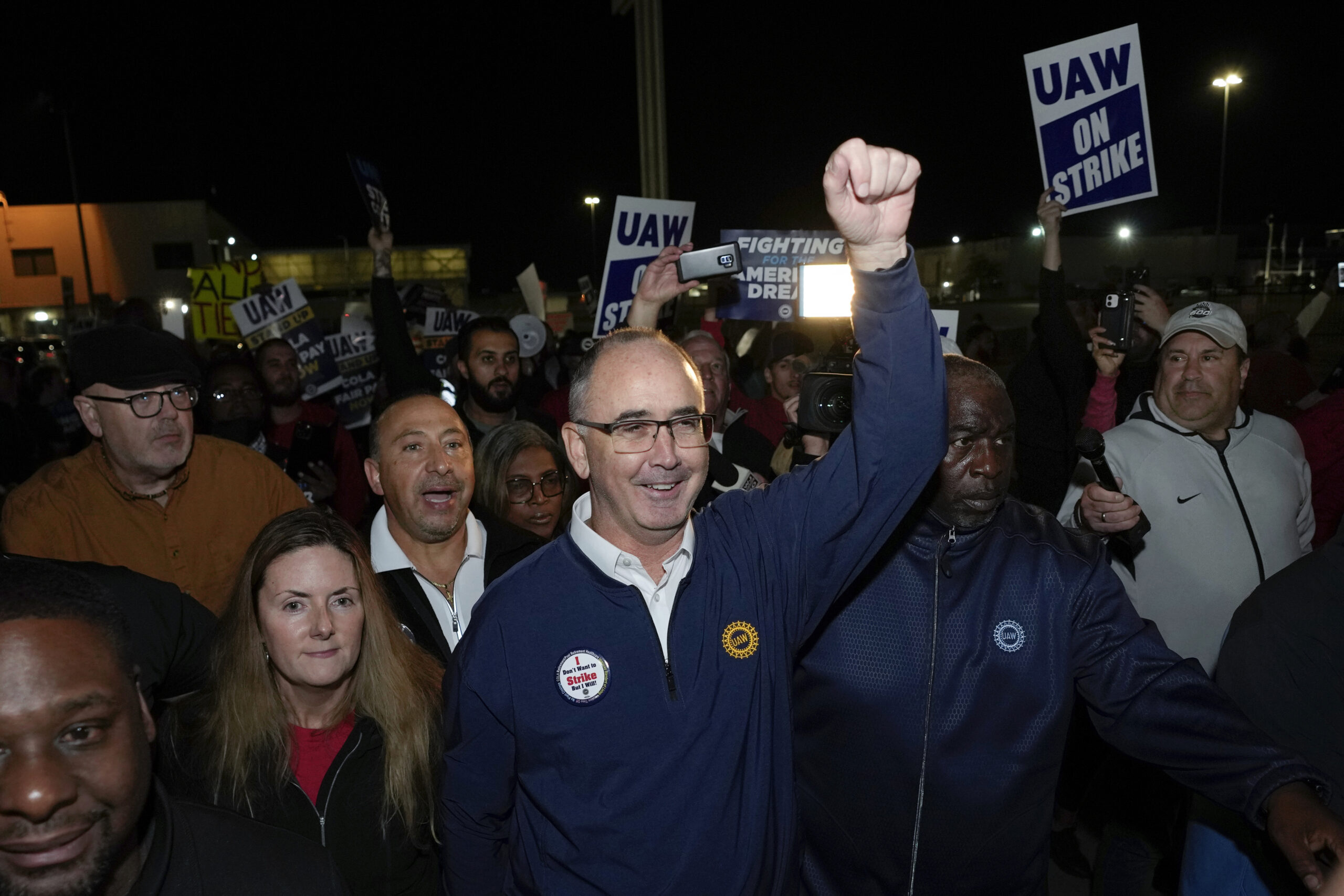
Published 04/11/2023 12:53 | Edited 11/07/2023 07:41
The UAW (United Auto Workers) union, which represents the majority of workers in the automotive sector in the United States, announced on Thursday (2) the end of the largest strike in the history of major Detroit automakers – General Motors (GM), Ford and Stellantis. In seven weeks of strike, metalworkers gained public support and even saw President Joe Biden participate in a picket line – something unprecedented in North American history.
Even more conservative estimates indicate that at least 45 thousand workers crossed their arms in the “big three” (the three giants) in Detroit, which produce around 3,415 vehicles per day. Economic losses were more than US$10.42 billion (equivalent to more than R$51 billion). According to the Anderson Economic Group, the loss of car manufacturers was US$4.3 billion (around R$21 billion).
Starting on September 15, the historic strike brought significant economic gains for workers – the best in more than 40 years. . Since the great capitalist crisis of 2007/2008, these workers in the automobile industry suffered from salary cuts and loss of rights.
According to the three collective agreements signed by the UAW – one for each automaker –, salaries will have a real increase (in addition to inflation) of 11%. This adjustment will be immediate. By April 2028, companies must give another increase (also real) of 25%.
Furthermore, the minimum wage for the category will be raised by 70%, especially benefiting new workers. There will be a ratification bonus for metalworkers of US$5,000 and the creation of a cost of living allowance for hourly and salaried workers. Safety conditions in the workplace will also have to improve, as will guarantees against dismissals. Electric vehicles, the future of the industry, require fewer components and, therefore, fewer jobs. Thus, the transition from cars with internal combustion engines to battery-powered cars is at the center of the debate.
Throughout the negotiation, the automakers insisted on immediate adjustments of 10% and additional adjustments of 23%. Amid the strike, the announcement of higher-than-expected profits at GM and Ford in the third quarter weakened the bosses’ speech. “Our union showed the world what is possible when workers come together to fight for more rights”, declared, in a live, the president of the UAW, Shawn Fain.
Although the agreements are only valid for those who work at GM, Ford and Stellantis, the impact of the negotiations will benefit workers at other automakers. According to Shawn Fain, the movement’s priority now is to organize non-unionized workers. Manufacturers with plants outside of Detroit are already trying to get ahead of the curve to contain demonstrations and strikes.
This is the case of Toyota and Honda, Japanese multinationals whose employees are not represented by unions in the United States. Aware of the growing pressure on the factory floor, these automakers have already committed to improving workers’ contracts. On Wednesday (1), Toyota announced that it will increase wages by 9%. Honda also announced salary adjustments, but has not yet disclosed the values.
Shawn Fain, the leader of the UAW, did not issue a receipt. “Toyota is not giving raises out of the kindness of its heart,” said the union leader. “Toyota is the largest and most profitable automobile company in the world and could simply have raised wages a month or a year ago. They’ve increased now because the company knows we’re going after them.”
With the end of the strike at Detroit manufacturers, the attention of North American trade unionism is now turning to other equally symbolic strikes. Actors and screenwriters continue to face the big Hollywood studios. In Las Vegas and Southern California, hospitality workers’ fight for better wages and benefits continues.
Strikes in the United States mobilized hundreds of thousands of workers in 2023 alone. Despite low unemployment and macroeconomic indicators in a relatively stable situation, North Americans suffer from the rise in the cost of living and inequality – which was worsened by the Covid-19 pandemic. When the year began, only 6% of private sector workers were unionized. Victorious strikes, like the one by the UAW, can change this scenario.
Source: vermelho.org.br

